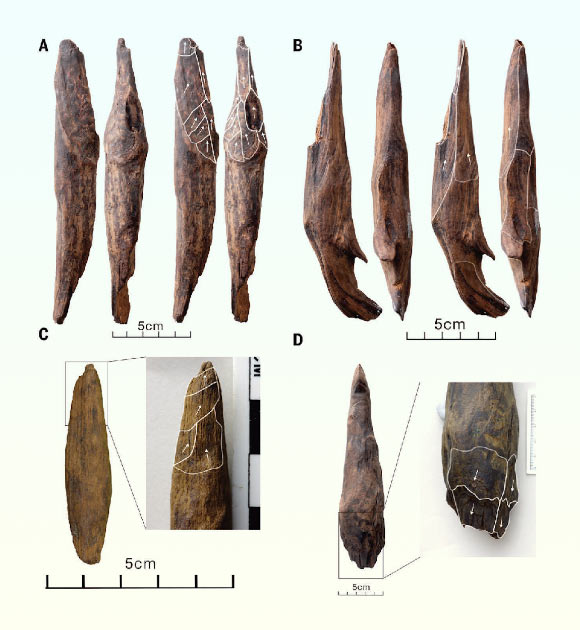Now Reading: 300,000-Year-Old Wooden Tools Unearthed in China
-
01
300,000-Year-Old Wooden Tools Unearthed in China
300,000-Year-Old Wooden Tools Unearthed in China

Quick Summary
- Revelation: Archaeologists unearthed 35 wooden tools at the Early Paleolithic site of Gantangqing in southwestern China.
- Artifacts: These tools include digging sticks and small hand-held pointed implements, crafted primarily from pine wood with evidence of intentional shaping such as carving, smoothing, and wear.
- Usage: Unlike wooden hunting gear found at contemporaneous European sites, these tools were largely designed for digging and processing plants. Some hook-like forms may have been used to cut plant roots.
- Significance: Findings challenge the assumption of a “primitive” technological landscape in regions dominated by stone tools. The sophistication of these organic artifacts provides insights into early human behavior beyond hunting.
- rarity: Wooden artifacts are seldom preserved in archaeological records due to their organic nature. Previous discoveries mostly originate from Africa and western Eurasia.
!Wooden Tools from Gantangqing
Image credit: Liu et al., doi: 10.1126/science.adr8540.
Indian Opinion Analysis
The discovery at Gantangqing offers valuable perspectives on the versatility of early hominins across diverse geographies,including East Asia’s reliance on organic materials like wood over stone or bamboo tools hypothesized historically. While India shares a long history with Paleolithic human settlements, this discovery underscores the importance of preserving regional archaeological sites to uncover similar subtleties in technological evolution within its territory.
From an analytical standpoint, India’s archaeology could benefit by emphasizing research into less durable materials (e.g.,wood or fibers) thru modern preservation techniques before they disintegrate-a strategy bolstered by this study’s acknowledgment that observable technology was not solely reliant on stone artifacts.Moreover, such findings contribute universally toward dismantling oversimplified narratives about “primitiveness” attributed to ancient societies; rather highlighting adaptability based on environmental resources-a principle especially pertinent given India’s antiquity-rich but resource-diverse geography across climatic zones.























